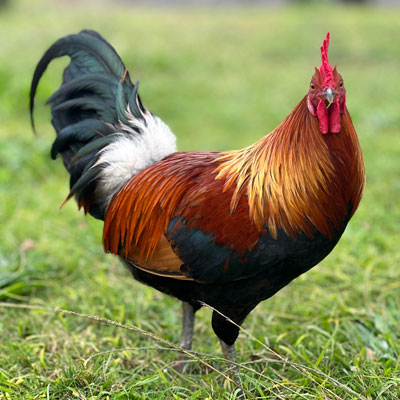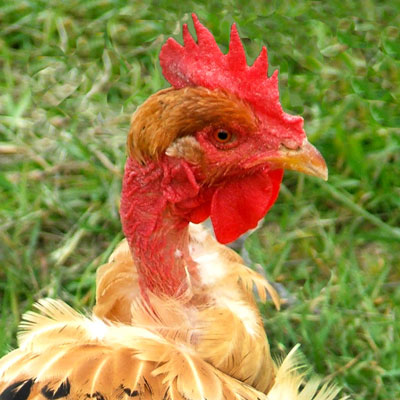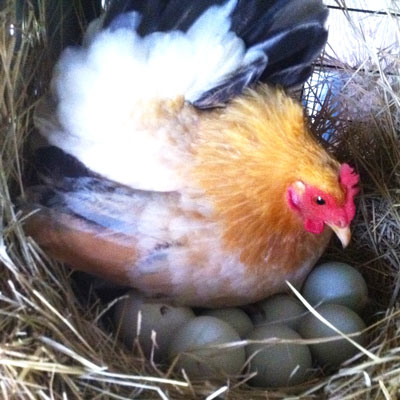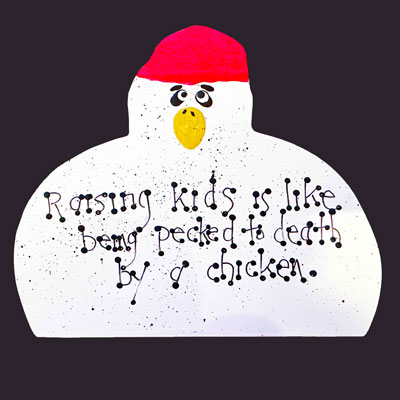Native Son: Prudent Pathological Poultry Pedagogy Pertaining to Plants
(A Garden Article)
Did you know I learned some of my best gardening secrets from a “Diseases of Poultry” book? Hang on … this is a bit of a ride, but it’s quick and will make sense.

For the most part, the book would bore the socks off anybody but professional pathologists, a group of people who one might assume could be described the same way … but one would be wrong. Some of the coolest people I’ve ever met are plant pathologists. (Kevin Ong says, “YES!!!” Dave Appel says, “Well … of course.”)
So basically, this book features over 200 poultry diseases, each described in two to three pages of horrific, yet mind-numbing detail. Yes, my eyeballs just rolled back into my head, too … but wait! Each chicken-mangling disease profile concludes with various methods of control, including methods to prevent the disease. Now we’re talkin’!!!

Let me save you five hours – “Blah, blah, blah … good air circulation, clean drinking water, and daily inspection” X 180. Honestly. Almost every poultry disease can be prevented with good air circulation, clean drinking water, and a daily inspection. The basics … oh yes, the basics. Back to my roots…
Gardening … the basics. Soil, water, appropriate plant selections, and a daily inspection.
Soil— After climate, hands down the most essential aspect of the garden. Ironically, often the most ignored aspect of the garden … likely because it requires a touch of mental and wheelbarrow full of time or physical effort to improve. (Helpful hint: If you hire a contractor to build a flower bed, require in writing that you must inspect the soil tilling before the addition of organic matter. Almost every contractor I’ve seen piles organic matter on the ground, then runs a tiller through this already fluffy stuff, resulting in an interface and many problems down the road.)
Water— Water is a substance used to keep live things alive. It cannot magically revive that plant you let die of thirst. Keep your garden watered. (Just a simple hint to people who are plant-sitting for a friend on two-week vacation … don’t wait until your friend is on the way home from the airport and then drown all their plants. In spite of your dramatic, Oscar-worthy theatrical performance, including your best-ever “puppy-dog eyes,” they will know.)
Appropriate Plant Selections—Stay conservative with core plantings (trees, shrubs, groundcovers). Explore with perennials/grasses. Celebrate with annuals. Accent with … well … accents. Be careful with your cultivar selections; ‘Herbstsonne’ will get 6 – 7 ft. tall, ‘Goldsturm” will get 2 – 3 ft. tall –and both are Black-eyed Susan Coneflowers. (Sebright is about 20 oz.; Jersey Giant can reach 16 lbs. … both are chickens.)
Good Air Circulation—For the life of me, I cannot figure out why almost every gardener in Texas would rather die of heat stroke than bring a little fan into the garden … especially public gardens where beds are huge and much of the planting is done by volunteers. I bought a couple of those portable swamp coolers for the Longview Arboretum, and I know for a fact that they actually saved lives … mine, anyway.
Shade—Ditto for those little 10-ft. x 10-ft. pop-up tents.
Daily Inspections—You’ve probably heard it: The best fertilizer for the garden is the footprints of the gardener. Daily visits to your garden will allow you to spot problems/issues while they are small and easily managed, before they get out of hand. Conversely, daily visits make it easy to see the processes of the ecosystem, and all of the little wonders, the little Milagros that occur every day in a garden. In turn, the garden gives to its gardener a two-fold physical and mystical connection to Mother Earth and, perchance, beyond… which, to me anyway, is the absolute best aspect of gardening. You can call it “gardening,” you can call it “metaphysical explorations,” you can call it “playing in the dirt with God” … it’s all the same to me.
That wraps up the basics. For the thousands of details spun into the most clear, concise, and understandable garden book I’ve ever read, check out Neil’s book.

Oh yes, it HAS been answered! The EGG came first. It was laid by an animal that would later evolve a chicken. (Also, animals developed eggs more than 500 million years ago; birds 150 million years ago; junglefowl 4 to 6 million years ago; chickens about 10,000 years ago.)

A few quotes from Foghorn Leghorn:
That boy’s about as sharp as a bowling ball.
Smart boy, got a mind like a steel trap – full of mice.
The snow, I say, the snow is so deep the farmers have to jack up the cows just to milk’em.
________________________________________________________
I need a road trip! Let me know if you’d like me to come and speak to your group sometime. I’m low maintenance, flexible, and you know I like to go just about anywhere. No city too big; no town to small. Just send me an e-mail at stevenchamblee@yahoo.com and we’ll work something out.
